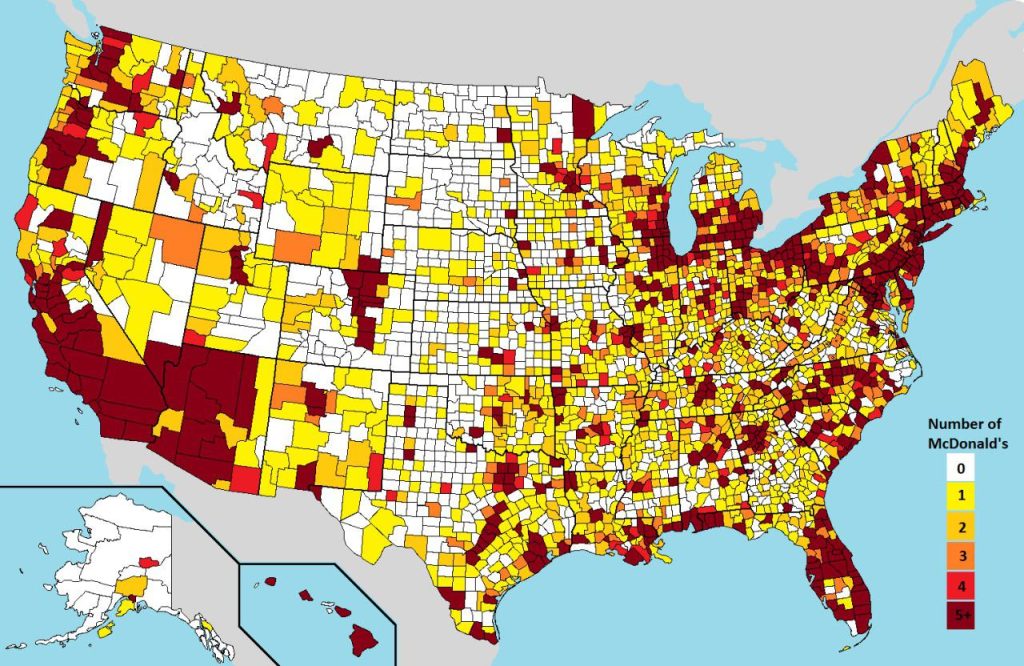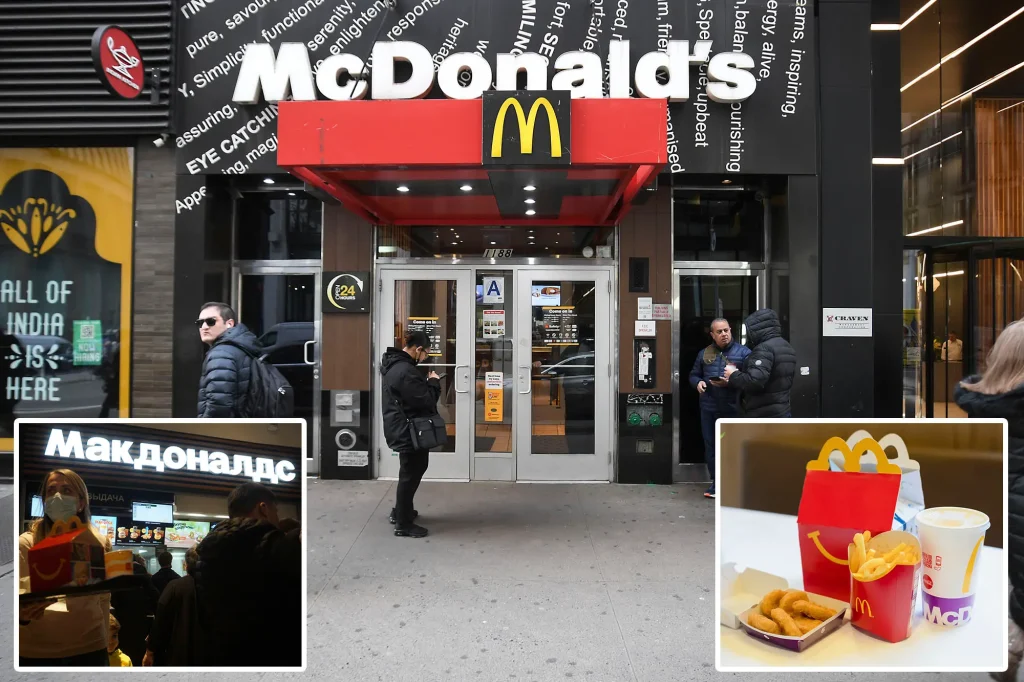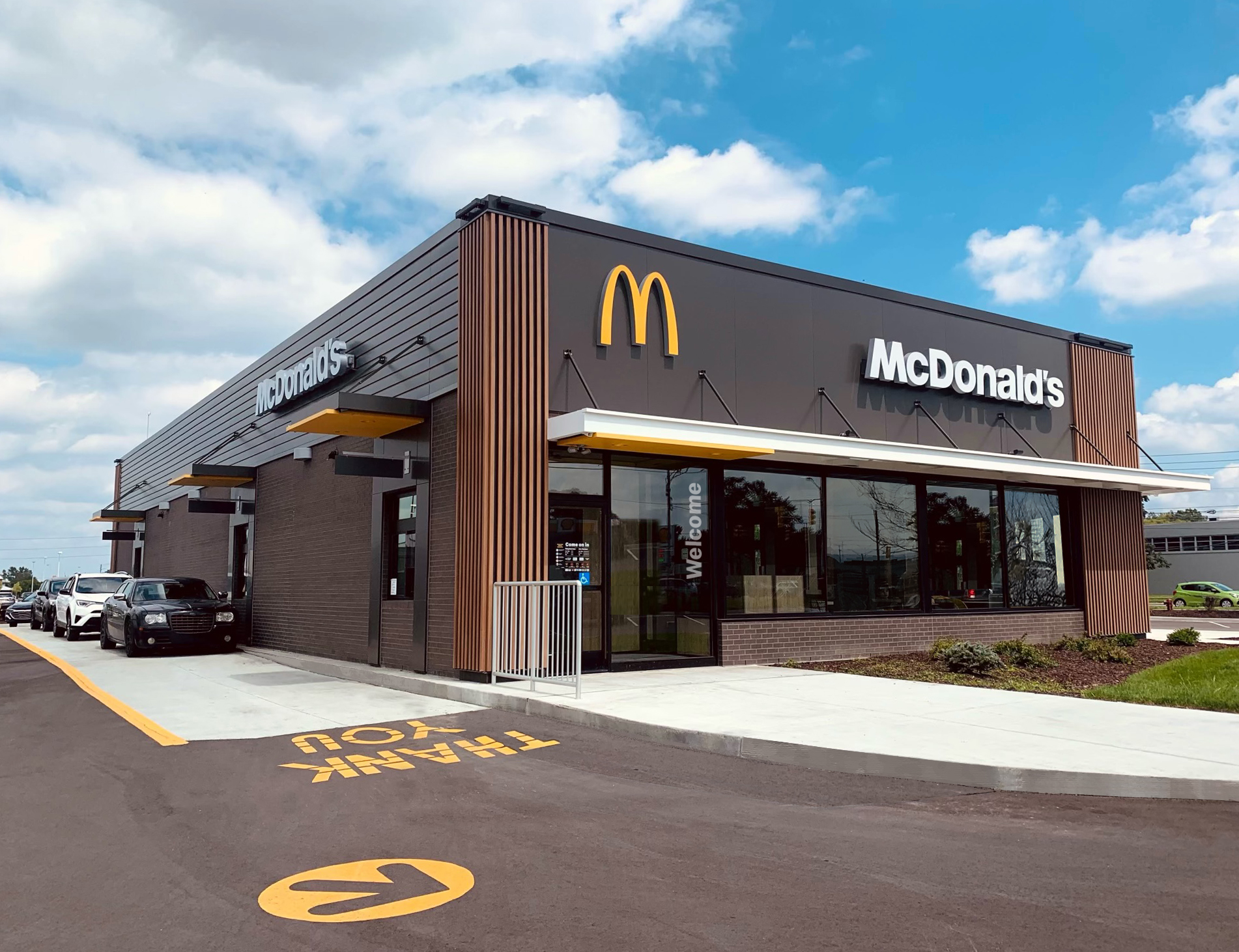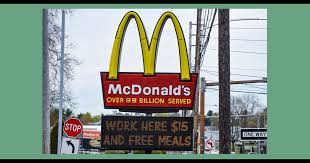How Many McDonalds Are In The US?
Many Wonder How Many McDonalds Are In The US? Regarding fast food in America, few names resonate as strongly as McDonald’s, with its unmistakable golden arches gracing the streets of cities and towns nationwide. With over 13,544 locations strategically scattered from the sunny beaches of California to the bustling urban centers of New York, McDonald’s has become an integral part of American culture and daily life.
This extensive network caters to millions of customers each day and reflects evolving consumer preferences, traffic patterns, and regional tastes. In this blog post, we will explore the incredible number of McDonald’s restaurants throughout the United States, delving into their geographic distribution, the dynamics of consumer behavior, and the factors contributing to their enduring success.
Table of Contents
Geographic Distribution of McDonald’s in the US
| State | Number of Locations |
| California | 1,233 |
| Texas | 1,174 |
| Florida | 879 |
| Illinois | 656 |
| Ohio | 624 |
| New York | 570 |
| Michigan | 538 |
| Pennsylvania | 482 |
| North Carolina | 476 |
| Georgia | 447 |
| Virginia | 398 |
| Indiana | 359 |
| Tennessee | 331 |
Analyzing Consumer Foot Traffic at McDonald’s Locations

Understanding consumer foot traffic is crucial for answering the question, “How Many McDonalds Are In The US?” McDonald’s locations are strategically placed to maximize visibility and accessibility. Interestingly, out of 13,544 locations, a substantial 7,469 experience above-average foot traffic. Even more impressive, 3,811 locations are considered highly visited. This high level of traffic underscores McDonald’s enduring popularity and its ability to draw in a steady stream of customers.
By analyzing these patterns, businesses can gain valuable insights into consumer behavior. For instance, foot traffic data reveals peak dining times and high-demand menu items. Companies can leverage this information to optimize their operations, ensuring they meet customer expectations effectively. In essence, foot traffic analysis at McDonald’s provides a blueprint for understanding consumer dynamics in the fast-food industry.
Pricing Strategies and Menu Offerings
- Affordable Menu Options:
McDonald’s has always prioritized affordability, making it a go-to choice for budget-conscious diners. From the Dollar Menu to value meals, customers enjoy a range of wallet-friendly options.
- Popular Menu Items:
The Big Mac, Quarter Pounder with Cheese, and Chicken McNuggets are perennial favorites. Their widespread popularity underscores McDonald’s ability to cater to diverse tastes.
- Seasonal and Limited-Time Offers:
McDonald’s keeps its menu fresh with seasonal items and limited-time offers. These specials often create a sense of urgency and excitement among customers, driving increased foot traffic.
- Customizable Choices:
McDonald’s allows customers to customize their meals, from selecting different sauces to choosing healthier sides like apple slices. This flexibility enhances customer satisfaction and loyalty.
- Targeting Different Demographics:
McDonald’s menu appeals to all age groups. Happy Meals with toys attract children, while McCafé offerings cater to coffee lovers. This broad appeal ensures McDonald’s remains a family-friendly destination.
Review Distribution and Customer Feedback
McDonald’s restaurants across the United States have varied review distributions. Some locations boast only a single review, while others have an impressive 20,320 reviews. How Many McDonalds Are In The US? With 13,544 locations, approximately 13,263 of them have garnered over 100 reviews. This high volume of feedback showcases extensive customer engagement. Transitioning from positive praise to constructive criticism, these reviews provide valuable insights.
Customer feedback often highlights favorite menu items, exceptional service, and improvement areas. Additionally, reviews reveal regional preferences and dining trends, offering businesses data to fine-tune their strategies. This rich tapestry of customer input helps McDonald’s maintain high standards and adapt to consumer needs. Therefore, leveraging this information can be pivotal for businesses enhancing their customer experience.
Impact on the Food and Beverage Industry
- Market Penetration and Competitive Edge:
McDonald’s extensive presence with over 13,544 locations gives it a significant competitive advantage. This market penetration makes it challenging for new entrants to compete nationally.
- Supply Chain Innovations:
McDonald’s has revolutionized supply chain management in the F&B industry. Their efficient logistics and consistent quality control set benchmarks other companies strive to meet.
- Menu Standardization and Localization:
While maintaining a core menu, McDonald’s adapts offerings to local tastes. This balance of standardization and localization influences industry practices, driving other chains to adopt similar strategies.
- Employment and Economic Contribution:
As one of the largest employers in the sector, McDonald’s substantially impacts local economies. The brand provides numerous job opportunities, influencing wage standards and employment practices.
- Technological Advancements:
McDonald’s investments in technology, from self-service kiosks to mobile ordering apps, are setting new industry standards. These advancements enhance customer experience and streamline operations, pushing competitors to innovate similarly.
Leveraging Geospatial Intelligence for Business Success

Geospatial intelligence offers actionable insights for businesses aiming to replicate McDonald’s success. But first, How Many McDonalds Are In The US? The answer: an impressive 13,544. By analyzing the geographic distribution of these locations, companies can identify high-traffic areas ripe for new ventures. Transitioning to consumer behavior, geospatial data reveals peak times and popular menu items, enabling businesses to tailor their strategies effectively.
For instance, heat maps can pinpoint under-served regions, suggesting ideal spots for expansion. Moreover, understanding the demographics surrounding McDonald’s locations helps craft targeted marketing campaigns. As McDonald’s uses geospatial intelligence to optimize its operations, businesses can follow suit, enhancing efficiency and customer satisfaction.
The Role of McDonald’s in American Culture
The golden arches of McDonald’s have become an iconic symbol across the United States. These ubiquitous restaurants serve as more than just places to eat; they are community gathering spots. Families enjoy Happy Meals while workers grab quick lunches. With over 13,544 locations, the brand has woven itself into the American fabric.
McDonald’s has also played a significant role in pop culture, appearing in movies, songs, and even art. Its menu items, like the Big Mac, have become cultural touchstones. So, How Many McDonalds Are In The US? The answer underscores its deep-rooted influence. From late-night cravings to road trip stops, McDonald’s offers a sense of familiarity. This enduring presence shapes dining habits and reflects broader societal trends.
Future Trends and Innovations at McDonald’s
McDonald’s is continuously evolving to stay ahead. With over 13,544 locations answering “How Many McDonalds Are In The US,” the brand is innovating. Embracing technology, McDonald’s is expanding its self-order kiosks and mobile app features. These advancements streamline the customer experience, driving convenience. Sustainability is another key focus. The company is investing in eco-friendly packaging and renewable energy sources.
This shift aligns with growing consumer demands for green practices. Menu diversification is also on the horizon. McDonald’s is exploring plant-based options and healthier meal choices. These innovations cater to evolving dietary preferences. Additionally, enhanced delivery services are being rolled out nationwide. Partnering with significant platforms ensures timely, efficient deliveries. Through these future trends, McDonald’s aims to maintain its industry leadership, meeting modern consumer expectations effectively.
Strategic Insights for F&B Businesses

- Optimize Location Selection:
Utilize geospatial intelligence to pinpoint high-traffic areas similar to McDonald’s. Analyzing demographic and foot traffic data ensures maximum visibility and accessibility for your establishments.
- Diversify Menu Offerings:
Emulate McDonald’s strategy of combining core items with regional specialties and limited-time offers. This approach caters to diverse tastes and maintains customer interest.
- Leverage Customer Reviews:
Actively monitor and respond to customer feedback. High engagement with reviews can improve service quality and brand loyalty, just as McDonald’s has seen significant patron involvement.
- Implement Technological Advancements:
Adopt self-service kiosks and mobile ordering apps to enhance customer convenience. These technologies streamline operations and meet the modern consumer’s quick, efficient service demand.
- Focus on Affordability:
Ensure your menu includes budget-friendly options without compromising quality. As demonstrated by McDonald’s success in this area, affordable pricing is a critical factor in attracting and retaining a broad customer base.
McDonald’s Foundation
Ever wondered when was McDonalds founded? The origin story begins in 1940 when brothers Richard and Maurice McDonald opened the first McDonald’s restaurant in San Bernardino, California. Only 15 years later in 1955, did Ray Kroc join the company as a franchise agent. When did McDonalds open its doors eight decades ago under the McDonald brothers is an important part of the iconic brand’s history. By 1961, Kroc had purchased the rights to the McDonald’s name from the brothers. So whether you’re looking for breakfast or another meal, remembering that when does McDonalds breakfast close varies by location. Be sure to check your local store’s hours for their specific daily schedules.
Frequently Asked Questions
How many McDonalds are in the US?
There are 13,544 McDonald’s locations in the United States. This extensive network spans California to New York, reflecting the brand’s widespread popularity.
Which state has the most McDonald’s restaurants?
California leads with 1,233 McDonald’s locations. This is due to its large population and high demand for fast food.
How does McDonald’s maintain affordability?
McDonald’s offers a variety of budget-friendly options like the Dollar Menu and value meals. This strategy ensures that customers from diverse backgrounds can enjoy their meals without breaking the bank.
What role does geospatial intelligence play for McDonald’s?
Geospatial intelligence helps McDonald’s identify high-traffic areas and optimize operations. The company can strategically place new locations and tailor marketing efforts by analyzing geographic and demographic data.
Conclusion
From bustling cities to quiet towns, McDonald’s has cemented its place in American culture. Answering the question, “How Many McDonalds Are In The US?” reveals an astounding 13,544 locations. This expansive reach underscores McDonald’s strategic prowess and consumer appeal. Transitioning from geospatial intelligence to innovative pricing, McDonald’s continues to set industry standards.
Its ability to adapt to regional tastes while maintaining core menu items is unparalleled. Businesses can learn from McDonald’s success by leveraging similar strategies. The golden arches not only represent convenience but also embody a successful business model. As the fast-food landscape evolves, McDonald’s remains a beacon of consistency and innovation. In conclusion, McDonald’s enduring presence offers valuable insights for anyone navigating the dynamic F&B industry.





